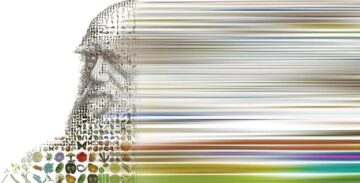David Quammen in Anthropocene Magazine:
 Since the late 1970s, there have come three big surprises about what we humans are and about how life on our planet has evolved.
Since the late 1970s, there have come three big surprises about what we humans are and about how life on our planet has evolved.
The first of those three surprises involves a whole category of life, previously unsuspected and now known as the archaea. (They look like bacteria through a microscope, but their DNA reveals they are shockingly different.) Another is a mode of hereditary change that was also unsuspected, now called horizontal gene transfer. (Heredity was supposed to move only vertically, from parents to offspring.) The third is a revelation, or anyway a strong likelihood, about our own deepest ancestry. (It seems now that our lineage traces to the archaea.) So we ourselves probably come from creatures that, as recently as forty years ago, were unknown to exist.
One of the most disorienting results of these developments is a new challenge to the concept of “species.” Biologists have long recognized that the boundaries of one species may blur into another—by the process of hybridism, for instance. And the notion of species is especially insecure in the realm of bacteria and archaea. But the discovery that horizontal gene transfer (HGT) has occurred naturally, many times, even in the lineages of animals and plants, has brought the categorical reality of a species into greater question than ever. That’s even true for us humans—we are composite individuals, mosaics.
More here.
